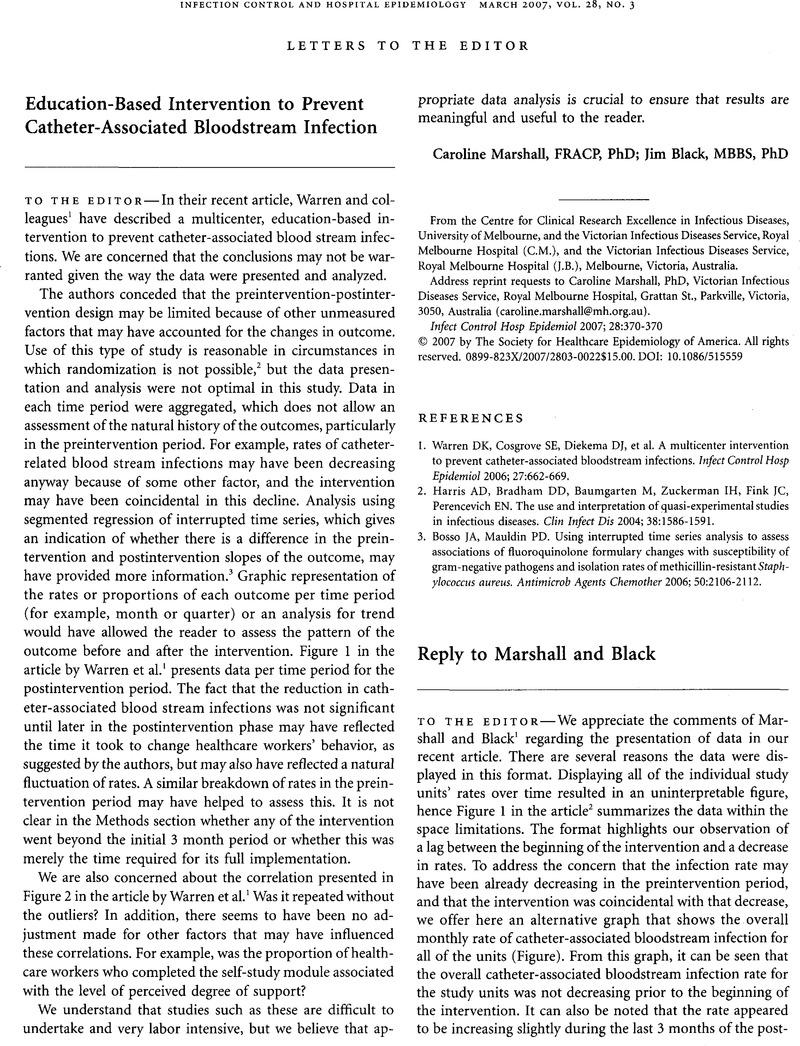No CrossRef data available.
Article contents
Education-Based Intervention to Prevent Catheter-Associated Bloodstream Infection
Published online by Cambridge University Press: 02 January 2015
Abstract
An abstract is not available for this content so a preview has been provided. As you have access to this content, a full PDF is available via the ‘Save PDF’ action button.

- Type
- Letters to the Editor
- Information
- Copyright
- Copyright © The Society for Healthcare Epidemiology of America 2007
References
1.Warren, DK, Cosgrove, SE, Diekema, DJ, et al. A multicenter intervention to prevent catheter-associated bloodstream infections. Infect Control Hosp Epidemiol 2006;27:662–669.Google Scholar
2.Harris, AD, Bradham, DD, Baumgarten, M, Zuckerman, IH, Fink, JC, Perencevich, EN. The use and interpretation of quasi-experimental studies in infectious diseases. Clin Infect Dis 2004;38:1586–1591.Google Scholar
3.Bosso, JA, Mauldin, PD. Using interrupted time series analysis to assess associations of fluoroquinolone formulary changes with susceptibility of gram-negative pathogens and isolation rates of methicillin-resistant Staphylococcus aureus. Antimicrob Agents Chemother 2006;50:2106–2112.Google Scholar


